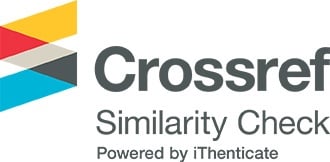Evaluation of functional activity components in the occupational therapy program for patients with stroke
Các tác giả
Từ khóa:
Tai biến mạch máu não, Hoạt động trị liệu, Hoạt động chức năngTóm tắt
Occupational Therapy (OT) with the aim of improving Functional Activities (FAs) for patients. In theory framwork, the FAs should be the main component and take up most of OT intervention. This research's goal is to assess the ratio of the composition of FAs to different therapeutic modalities on stroke's patient by observing 31 OT sessions of 12 therapists with a lisence of 3 years experience or more on 31 stroke patients (14 acute stage, 17 recovery stage) in Japan. The result showed that the duration time for one session was with an average of 45.5 ± 11.3 minutes; of which 30% of session was used for FAs. Activities relating to cooking (8.5%) and functional mobility (7.8%) were the most frequently used activities. Three forth of the treatment time is spent on activities in the sitting and standing positions, and the remaining time is spent on activities in the lying position. At the acute stage, there is a link between the level of patients independence (FIM) and the use of FAs in the tre program (P<0.05). However, at the recovery stage, the level of independence of the patients increased significantly but did not change the composition of the FAs. This study illustrated that the therapists seem to have focused more on activities with the aim of improving body structure and function defects according to the ICF classification.
Abstract
Occupational Therapy (OT) with the aim of improving Functional Activities (FAs) for patients. In theory framwork, the FAs should be the main component and take up most of OT intervention. This research's goal is to assess the ratio of the composition of FAs to different therapeutic modalities on stroke's patient by observing 31 OT sessions of 12 therapists with a lisence of 3 years experience or more on 31 stroke patients (14 acute stage, 17 recovery stage) in Japan. The result showed that the duration time for one session was with an average of 45.5 ± 11.3 minutes; of which 30% of session was used for FAs. Activities relating to cooking (8.5%) and functional mobility (7.8%) were the most frequently used activities. Three forth of the treatment time is spent on activities in the sitting and standing positions, and the remaining time is spent on activities in the lying position. At the acute stage, there is a link between the level of patients independence (FIM) and the use of FAs in the tre program (P<0.05). However, at the recovery stage, the level of independence of the patients increased significantly but did not change the composition of the FAs. This study illustrated that the therapists seem to have focused more on activities with the aim of improving body structure and function defects according to the ICF classification.
Tài liệu tham khảo
[1] Japanese Association of Occupational Therapists: Occupational Therapy White Paper 2010. Japan Asociation of Occupational Therapy, 8, 28-36, 2011.
[2] Riken PM, Dekker J., “Clinical Experience of Rehabilitation Therapists with Chronic Diseases: a quantitative approach”, Clinical Rehabilitation, 12(2), 143-50, 1998.
[3] Crist P, Cada EA, Kramer P, et al., “A Practice analysis study of entry-level occupational therapists registered and certified occupational therapy assistant practice”, Occupational Therapy Journal Research, 24, s01-31, 2004.
[4] Ma HI, Trombly CA, “A Synthesis of the effects of occupational therapy for persons with stroke, part II: Remediation of impairments”, The American journal of Occupational Therapy, 56(3), 260-74, 2002.
[5] Trombly CA, Ma HI. A Synthesis of the effects of occupational therapy for persons with stroke, part I: Restoration of roles, tasks, and activities. The American journal of Occupational Therapy, 56(3), 250-59, 2002.
[6] Richards LG, Lamtham NK, Jette DU, et al., “Characterizing Occupational Therapy Practice in Stroke Rehabilitation, Archives of Physical Medicine and Rehabilitation, 86(2), s51-60, 2005.
[7] Lamtham NK, Jette DU, Coster W, et al., “Occupational Therapy Activities and Intervention Techniques for Clients with Stroke in Six Rehabilitation Hospital. The American Journal of Occupational Therapy, 60(4), 369-78, 2006.
[8] Smallfield S, Karges J. Classification of Occupational Therapy Intervention for Inpatient Stroke Rehabilitation. The American Journal of Occupational Therapy, 63(4), 408-13, 2009.
[9] Wolf TJ, Chuh A, Floyd T, et al., “Effectiveness of Occupation-Based Interventions to Improve Areas of Occupation and Social Participation After Stroke: An Evidence-Based Review”, The American journal of Occupational Therapy, 69(1), p1-11, 2015.
[10] Law M, Polatajko H, Townsend E, et al. Core Concepts of occupational Therapy. In Canadian Occupational Therapy Association. Enabling occupation: An occupational therapy perspective. Canadian Association of Occupational Therapists, 28:28-56, 1997.
[11] De WL, Kamsteegt H, Yadav B, et al. Defining the content of individual physiotherapy and occupational therapy sessions for stroke patients in an inpatient rehabilitation setting. Development, validation and inter-rater reliability of a scoring list. Clinical Rehabilitation, 21(5), 450-459, 2007.
[12] Ballinger C, Ashburn A, Low J, et al., “Unpacking the black box of therapy – a pilot study to describe occupational therapy and physiotherapy interventions for people with stroke”, Clinical Rehabilitation, 13(4), 301-09, 1999.
[13] Gillen G. A Fork in the Road: An Occupational Hazard? The American Journal of Occupational Therapy, 67(6), 641-52, 2013.
[14] Fisher AG. Uniting Practice and Theory in an Occupational Framework. The American Journal of Occupational Therapy, 52(7), 509-21, 1998.
[15] Dejong G, Horn SD, Conroy B, et al., “Opening the black box of post stroke rehabilitation: Stroke rehabilitation patients, processes and outcomes”, Archives of Physical Medicine and Rehabilitation, 86(2), s1–7, 2005.
[16] Dejong G, Horn SDSD, Julie G, et al., “Toward a taxonomy of rehabilitation interventions: Using an inductive approach to examine the “black box” of rehabilitation”, Archives of Physical Medicine and Rehabilitation, 85(4), 678-86, 2004.
[17] Amini DA, Kannenberg K, Bodison S, et al., “The Occupational Therapy Practice Framework: Domain and Process, 3th edition, American Occupational Therapy Association, 68(1), s1-48, 2014.
Tải xuống
Tải xuống: 59







